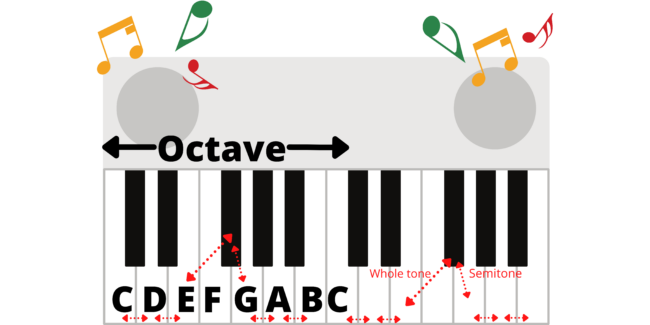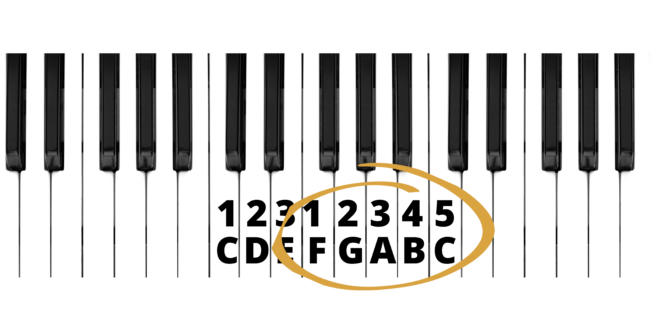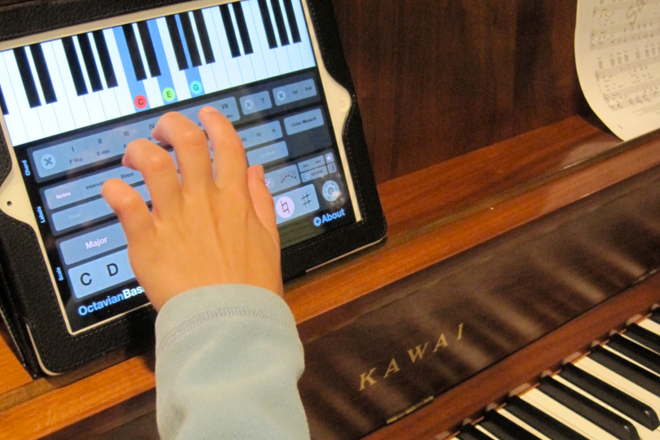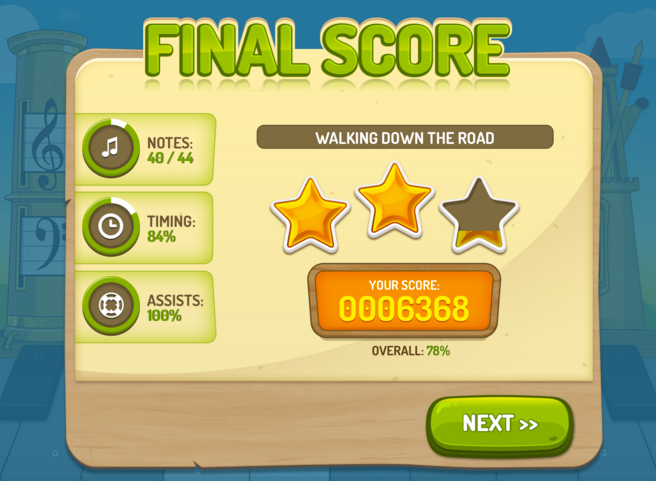Piano Scales for Beginners: A Complete Guide

You’ve probably heard about playing piano scales. Not sure where to begin? This article will break it all down for you.
On the surface, it might seem like music is all about creativity and freedom. There is truth to that, but music is highly technical, mechanical, and logical. You can only crack the code to its magic when you understand its patterns and inner workings.
Scales are game-changing for anyone beginning their musical journey, especially for piano players.
Our Simply Piano app will teach you everything you need to know about scales. In the meantime, check out this beginner’s manual to help you take your first steps.
What’s a scale?
If you’ve found your way here, you probably already know about pitch, notes, and intervals. If you don’t, you can read more about them here.
But if you just want a quick recap, let’s go over the basics.
In Western music, there are twelve particular frequencies called notes. They use letters A to G as labels and sharps (#) and flats (b) to specify slightly higher or lower sounds.
Intervals are the spaces between notes. The smallest interval in Western music is a semitone; the biggest is an octave.

So, where do piano scales fit in?
A scale is a series of seven notes with specific intervals that create an intervallic pattern.
Each scale has a unique character or mood. You can apply this intervallic pattern starting on any note, and it will make a scale with the same personality.
When you hear a scale on its own, you’ll notice it easily. But most of the time, you listen to scales in the context of songs.
The major components of songs are melody, harmony, and rhythm.
- Melody is the song’s pain pattern that the lead instrument plays or the lead singer sings.
- Harmony is about the chords you play underneath the melody.
- A chord is when you play two or more notes simultaneously.
- The relationship between those notes creates harmony, and it’s responsible for the emotional content of the music.
- Rhythm is how the melody and harmony play in time and is sort of in a world of its own.
- You can trace all of the melodic and harmonic information you hear in songs back to scales.
So enough chit-chat, let’s see how a scale looks and feels!
C major scale.
The best scale for beginners to learn is the major scale. For centuries, the major sound has been the essence of music in the western world. You’ll recognize it by its bright and super resonant sound.
The C major scale is the most accessible major scale for piano players because it only uses white keys. Let’s start by writing down all the notes of the C major scale and numbering them:

So what should you do with this information?
First, practice playing the C major scale! It will build dexterity in your fingers and familiarity with the sound.
Start by practicing slowly. Once you’re grooving, you can use a metronome to practice playing it in time.
When learning piano, number your fingers one (thumb) to five (pinky). When you play the C major scale in your right hand, this is the correct fingering.

Special tip:
When you switch from your third finger back to your thumb (on the note F), make sure to slightly raise your hand so you can slip the thumb underneath!
For dynamic lessons, download the Simply Piano app on your phone or tablet.
Other major piano scales.
If you have some experience in music, or if you’re a bit of a musical genius – let’s get into some more major scales!
Here is a chart with all the notes for some other major scales. Notice how each one uses the same interval pattern – mind-blowing musical mechanics!

C minor scale.
If major is the yang, then minor is the yin – the same, but different. One can’t exist without the other!
The minor sound is melancholy, sad, and dark. It’s also a little less straightforward than the major because there are three different kinds of minor scales! For now, let’s focus on the most basic, the natural minor scale.
The essential difference between major and minor is in the third degree of the scale. The third degree is always flattened (lowered) by one semitone in a minor chord or scale. This changes the intervallic relationships in the scale. In a natural minor scale, the sixth and seventh degrees are also flattened by one semitone.
So how do you figure it out?
Let’s start by taking a C major scale and then flattening the third, sixth, and seventh degrees:
1 2 b3 4 5 b6 b7
C D Eb F G Ab Bb
But don’t just sit around reading numbers and letters – get on the piano and play!
This minor scale uses the same fingering as the major scale. Switch on your metronome, open up your Simply Piano app, and practice playing this scale until it’s easy on your ears and fingers.
Other minor piano scales.
C is always a safe place to start learning scales, but don’t get stuck there too long. Check out this table of the natural minor scale in some other keys.

Advanced tip:
You may notice that the A minor scale (in the table above) only uses the white keys! This makes it the sort of minor side-kick of C major. This is the “relative minor,” which means that the notes are the same, but the character of the scale is different. It’s different because it starts on A instead of C, making the interval relationships in the scale different.
Here’s another way to think about it:
If you look at the chart of other ‘major scales’, you will see that the A major scale’s third, sixth and seventh degrees are sharp notes (C#, F#, and G#).
This is why, in the minor scale, all those notes become flat and turn back into regular natural notes (C, F, and G). This is important because it can be confusing – minor doesn’t mean black keys! It just means certain notes are a semitone lower than their major cousin.
Scale up your piano practice!
You may not find scales so meaningful if all you want from the piano is to learn a few songs. But if you’re going to be a musician with a sharp, creative mind and the independence to learn whichever songs you like, start to understand your major and minor scales with our Simply Piano app.









